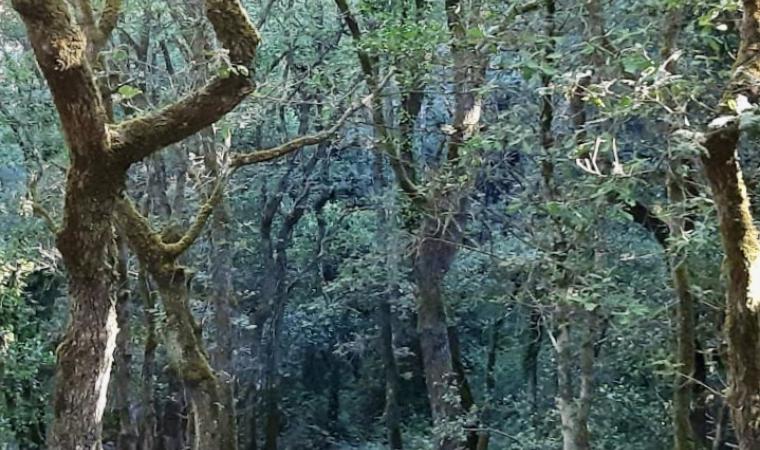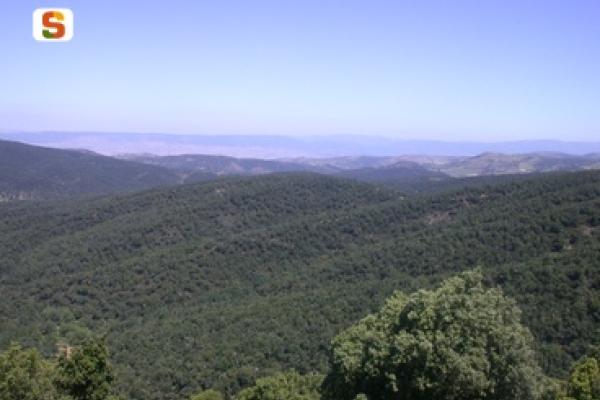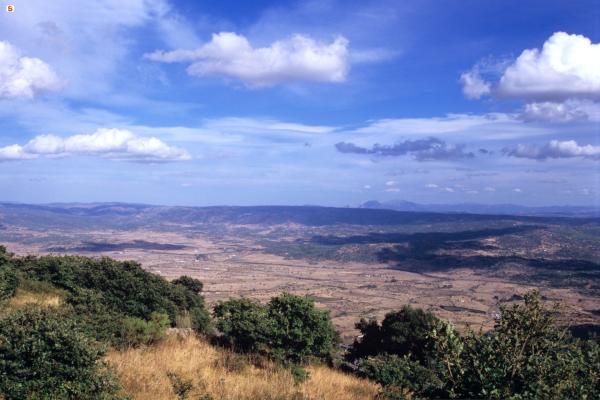It stretches for almost six hectares, mostly covered by majestic and very ancient yews - many of which are thousands of years old - up to 15 metres tall and one metre in diameter, with huge foliage. It looks like a forest out of a fairy tale or a fantasy story, but instead it’s the protected wooded area of sos Nibberos, inside the state-owned forest of Monte Pisanu, within the territory of Bono. Stretching across the northeastern slope of Monte Rasu, it is the largest yew forest in Italy and was declared a natural monument in 1994 by the Sardinia Region.
The undergrowth is almost absent, while in some areas you will also notice holly and downy oaks. On its borders, along the course of a torrent, a rare endemic species appears, after being classified a few years ago: it is the Arrigoni bramble that, compared to the common bramble, has much larger leaves, less thorny branches and its fruit is slightly larger and less sweet. The presence of this species and such a dense grouping of yews, which are generally isolated or in groups of a few trees, makes Sos Nibberos unique on the Island. The name comes from niberu, the local term that identifies the yew, also known as the tree of death, due to a toxin contained in its leaves and bark, which was used as a dye and also in popular medicine, in scrupulously calculated doses, to treat various ailments.
A network of marked paths and roads, to walk or cycle along, branches out inside the wood, where there are plenty of springs and resting and picnic areas. This immersion in nature continues through the rest of the Monte Pisanu forest: the landscape is dominated by downy oaks, which even appear above a thousand metres of altitude, while you can admire cork oaks and holm oaks further downstream. From the summit of Monte Rasu, Punta Manna, at an altitude of 1259 metres, the view extends from the Campeda plateau to the upper Tirso valley, passing through the town of Bono, while just below a thousand metres stands the former Franciscan convent, one of the oldest monasteries in Sardinia.
Monte Pisanu is part of the Goceano state-owned forest complex, along with Forest’Anela, the distinctive feature of which is the regeneration of the beech tree population that, along with chestnut trees, black pines, alders and fir trees, create an Apennine forest landscape. Extending not far from here, are the lush Foresta Burgos, where the majestic Nuraghe Costa is located, and the wood of Badde Salighes, in the territory of Bolotana where, in addition to walking amid the imported ‘exotic’ species, such as fir trees, calocedrus and cedars, you can visit the elegant Villa Piercy, a late-19th-century residence similar to a medieval castle.



















